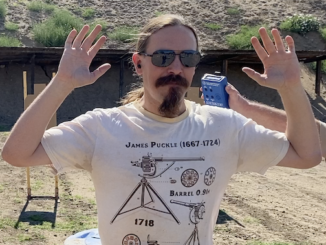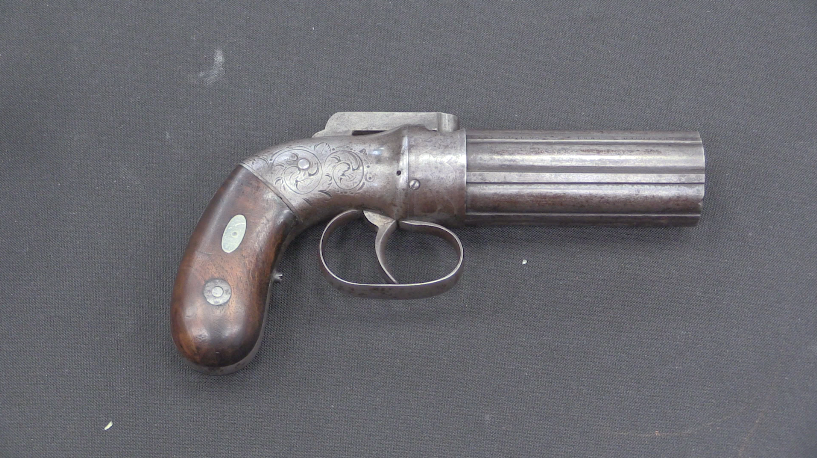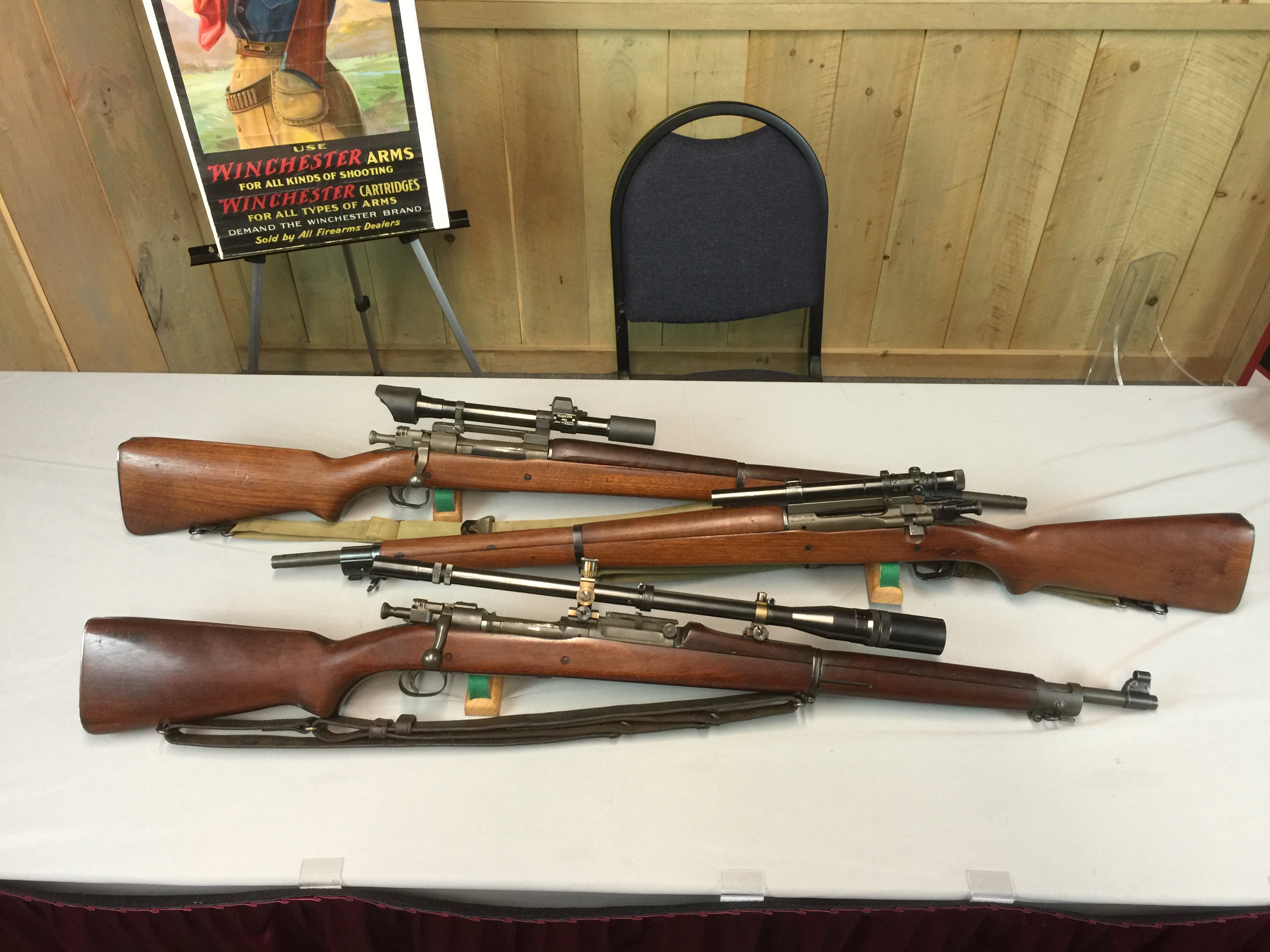This is lot #3213 in the upcoming RIA Premier Auction. It was scheduled for April, but has been postponed – check their web site for upcoming Online Only auctions every month, though!
Patented in 1884 and designed by retired Civil War General William Franklin, this was an effort by Colt to win a military contract for a repeating rifle. It was a wholly new rifle (not a conversion) that operated like a Gras action, was chambered for .45-70 cartridges, and fed from a 9-round hopper type magazine. Only 50 were made, and they underwent extensive trials with both the US Army and Navy in 1887 and 1888. Despite successfully firing some 4,000 rounds, none were ordered – probably because the magazine would have been far too easily damaged in field use.




Gravity-operated hopper magazines tend not to go well with the host weapon being used as a bayonet mount. It is also awkward to carry those hopper boxes on your person, unless you have a form of bandolier for such.
I think the Gatling gun (also made made by Colt in the same time period) had gravity feed magazines, which may have inspired its use on this gun. I think the Gatling was a crew served weapon with someone managing the magazine while someone else fired.
Also the Gatling’s were more of a stationary piece, not hauled around though muck and mire, so the magazine didn’t get abused. for all I know the clever details of keeping the magazine from double feeding on this rifle may have been pioneered on the Gatling.
During American Civil War AGAR was used which featured hopper feed, see photos:
https://en.wikipedia.org/wiki/Agar_gun
Patented in 1884…. I got it. I am looking at those blabs at magazine which look like sign of electric-arc welding. That would be rather early use of this novel invention. The official date of this method of joining metal was introduced at Paris exhibition of electricity in 1881. Man with name Nikolai Benardos is considered its inventor.
https://en.wikipedia.org/wiki/Nikolay_Benardos
Perhaps not directly related to firearms, but parts have to be made, somehow. The best electric arc welding on firearm I recall is 1940 Johnson rifle receiver. Not the first, but well applied while mating machined and stamped components.
This is not electric-arc welding, this is soft soldering.
Strange development.
It is clear when this is done to convert old on-loading rifles, as the British tried.
But it is completely incomprehensible why to do this on a new bolt rifle …
Apparently, this rifle was already ready when it became known about the requirement for a mag.
So they had to urgently invent something “on the knee”.
Sadly, no matter how well this did in testing, there was no way the Chief of Ordnance at the time was going to adopt an “ammo wasting” repeater.
at 25 cartridges per kilo, and with no motoriced transport, it´s a valid concern
Yes, and more important than “ammo wasting” is the fact that the detachable hopper magazine just doesn’t sit well with a rifle that’s expected to go through rough conditions (and sometimes the rifle is used as a bludgeon). One bad stroke and OOPS, ALL YOUR AMMO IS GONE!!
The rifle being designed around the black powder .45-70 cartridge at a time when Europe was switching to .30 caliber smokeless cartridges probably didn’t help gain acceptance.
It looks like something was protruding out from this rifle in every direction, even if the magazine was removed. One could shoot from this gun, but could not carry it…
I believe the initials on the stock were those of John R. Hegeman Jr. who was a Colt collector, but I have no idea why his initials would be on the stock.
Around the same time period, The British army was conducting comparative troop trials with hopper magazines and Lee box magazines, both on Lee type rifles.
The [s]Prussian[/s] German army was adopting the tubular magazined Mauser 71/84, and the French were only two years away from adoption of the smokeless 8mm lebel. ..
But then, the purpose of the post 1860s American army was almost soley to murder plains Indians, on behalf of the big Rail companies, so looking to adopt technology that was already about 20 years old, probably didn’t seem illogical.
Interestingly, Ian did not attend the thought of trying to use drill cartridges for operation demonstrations?
Ingenious and a plausible proposition – given that the other options e.g. tube, box etc. all had their own problems. Though its shortcomings obvious (including balance?).